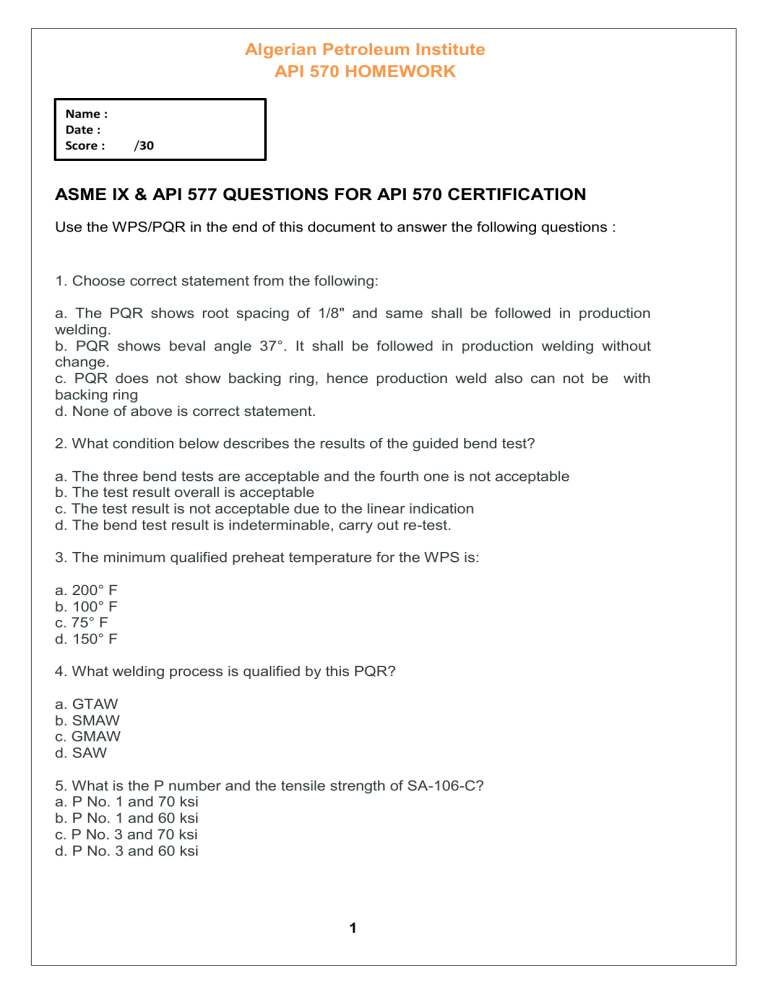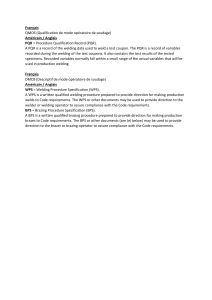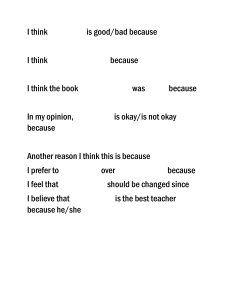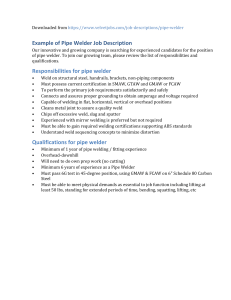
Algerian Petroleum Institute API 570 HOMEWORK Name : Date : Score : /30 ASME IX & API 577 QUESTIONS FOR API 570 CERTIFICATION Use the WPS/PQR in the end of this document to answer the following questions : 1. Choose correct statement from the following: a. The PQR shows root spacing of 1/8" and same shall be followed in production welding. b. PQR shows beval angle 37°. It shall be followed in production welding without change. c. PQR does not show backing ring, hence production weld also can not be with backing ring d. None of above is correct statement. 2. What condition below describes the results of the guided bend test? a. The three bend tests are acceptable and the fourth one is not acceptable b. The test result overall is acceptable c. The test result is not acceptable due to the linear indication d. The bend test result is indeterminable, carry out re-test. 3. The minimum qualified preheat temperature for the WPS is: a. 200° F b. 100° F c. 75° F d. 150° F 4. What welding process is qualified by this PQR? a. GTAW b. SMAW c. GMAW d. SAW 5. What is the P number and the tensile strength of SA-106-C? a. P No. 1 and 70 ksi b. P No. 1 and 60 ksi c. P No. 3 and 70 ksi d. P No. 3 and 60 ksi 1 6. In accordance with the PQR, the WPS is qualified for what welding positions? a. Flat and horizontal b. Flat, vertical, overhead and horizontal c. Vertical and overhead d. All positions 7. What is the F No. of an E 6010 electrode? a. F No. 4 b. F No. 3 c. F No. 2 d. F No. 1 8. The welder who welded the test plate for PQR 101 is qualified to weld in what position ? a. Flat b. Flat and horizontal c. Flat and vertical d. Flat, vertical and horizontal 9. The bend test specimen used are side bend. They are: a. Not accepted since 2 face bend and 2 root bend must be used b. Accepted since as alternative to (a) 4 side bend may be used c. Accepted since only 2 bend tests are required where as 4 bend tests are performed d. Not accepted since all 3 types of bend tests (face, root, side) are required. 10. As far as thickness ranges for Base Metal (B.M.) and weld metal (W.M.) as shown on WPS are concerned, your decision about the qualified range is: a. B.M. is okay and W.M. is not okay. b. Both B.M. and W.M. are okay. c. Both B.M. and W.M. are not okay. d. W.M. is okay and B.M. is not okay. 11. PWHT of PQR test coupon shows "No PWHT". It means that the PWHT for …………. : a. WPS may be with PWHT b. WPS must be without PWHT c. WPS must be with PWHT d. WPS may be with or without PWHT as PWHT is non-essential variable 12. In production welds, if groove design is changed to double V groove for the qualified base metal thickness, as per ASME Sec. IX will you: a. Accept the change - since it is non-essential variable b. Will not accept - since it is essential variable c. Accept only if okay by radiography d. Accept only if okay by both radiography and UT 13. Based on the specimen areas provided in PQR, are the ultimate stress calculations correct (as rounded up to 100 psi) for specimen T1 and T2: a. Calculation is okay for T1 alone. b. Calculation is okay for T2 alone. c. Calculations for both are okay. d. Calculations for both are not okay. 2 14. Which condition below best describes the result of tensile tests reported on the PQR? a. Test T1 & T2 are acceptable b. Test T1 & T2 are unacceptable c. Test T1 is acceptable & T2 is unacceptable d. Test T1 is unacceptable & T2 is acceptable 15. If electrode E7010 shown on WPS is changed to E7018, what is your decision? a. Revise WPS to show the change and re-submit as new revision b. N° revision of WPS is necessary as both belong to same F-number. c. A new PQR will be required to support the change. d. No revision of WPS required but show the change in same PQR and submit it as new revision 3 4 5 6 7 16. GMAW is characterized by………. : a. cut length electrode b. flux core electrode c. coated electrode d. solid wire electrode which is fed continuously through a welding gun 17. Gasses for GMAW can be: a. inert and reactive b. argon or helium for some applications c. inert, mixed with some type of reactive gas d. all of the above 18. In the electrode identification for GMAW, what does the "S" stand for, in the electrode ER70S-1? a. Silicon b. Spray arc c. Solid wire d. none of the above 19. The ……………. process has an electrode that is not intended to be consumed during the welding operation. a. SMAW b. GMAW c. FCAW d. GTAW e. SAW 20. The Process is characterized by the use of a continuously - fed solid wire electrode which provides an arc that is totally covered by a layer of granular flux. a. SMAW b. GMAW c. FCAW d. GTAW e. SAW 21. The surface of the weld on the side opposite from where the welding was done is called the a. weld face b. face reinforcement c. root surface d. root opening 22. A ……………is a feature which impairs the suitability of that structure for its intended purpose. a. defect b. fault c. discontinuity d. none of the above 23…………….. is described as the condition where the weld is not completely fused either to the base metal or to adjacent weld passes. a. Incomplete penetration b. Incomplete fusion c. Porosity d. none of the above 8 24. ……….describes the situation where the weld metal has not completely progressed into the weld root to fuse with the existing root face. a. incomplete penetration b. Incomplete fusion c. Porosity d. none of the above 25…………… is defined as a cavity type discontinuity formed by gas entrapment during solidification. a. Crack b. Lamination c. Porosity d. Undercut 26. ……………. are regions within the weld cross section or at the weld surface where the molten flux is mechanically trapped within the solidified metal. a. Incomplete penetration b. Incomplete fusion c. Overlap d. Slag Inclusion 27. What welding process is pictured ? a. GTAW b. FCAW c. SAW d. GMAW 9 28. What welding process is pictured ? a. GTAW b. FCAW c. SMAW d. GMAW 29. What welding process is pictured ? a. GTAW b. FCAW c. SMAW d. GMAW 30. What welding process is pictured ? a. GTAW b. FCAW c. SAW d. GMAW 10


